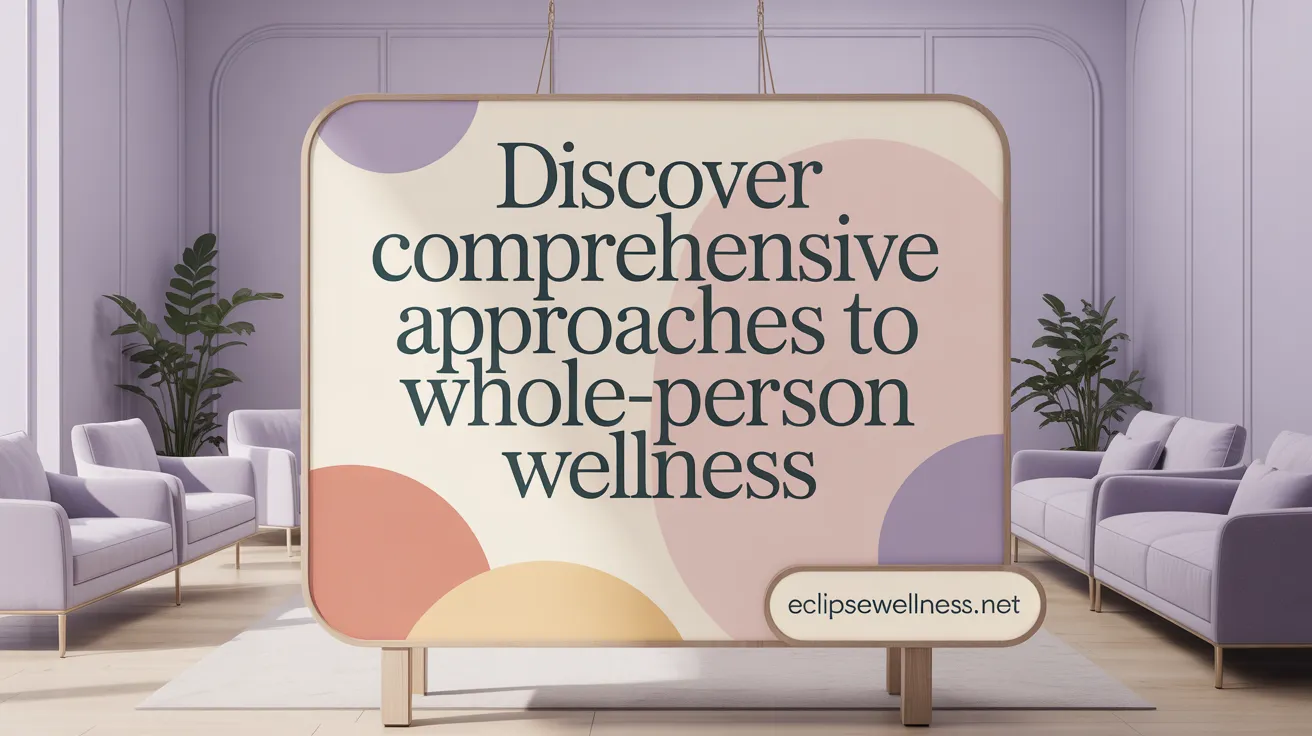The Integral Role of Mind-Body Connection in Healing
Recovery from illness, injury, or addiction transcends the physical realm, deeply entwining with mental and spiritual wellbeing. Modern holistic approaches recognize this intricate mind-body connection, offering integrative therapies that enhance healing by addressing the whole person — mind, body, and soul. This article explores how today’s science-backed holistic practices accelerate recovery, reduce relapse, and promote long-lasting wellness.
Understanding the Mind-Body Connection: Science Meets Ancient Wisdom

What is the mind-body connection and its historical and scientific basis?
The mind-body connection refers to the dynamic two-way relationship between mental and emotional states and physical health. Ancient civilizations such as those in Greece, China, and India recognized this link, developing holistic healing traditions like acupuncture and Traditional Chinese Medicine to balance body and mind. These early systems emphasized harmony and viewed health as an integration of physical, emotional, and spiritual wellbeing.
Modern science has validated this concept through fields like neuroscience and psychoneuroimmunology, which document how mental states regulate bodily functions including immune responses, hormone levels, and inflammation processes.
How do psychological states affect physical health?
Psychological experiences play a profound role in physical health. Chronic stress triggers the body's fight-or-flight response, resulting in elevated cortisol and adrenaline. When sustained, these hormones may lead to detrimental effects such as heart disease, reduced immune defenses, and mental health conditions like anxiety and depression.
Conversely, positive emotional states can bolster the immune system and balance the autonomic nervous system and hypothalamic-pituitary-adrenal (HPA) axis, supporting resilience and recovery.
Signs and symptoms of mind-body imbalance
When this harmony is disrupted, physical symptoms can manifest, including headaches, muscle tension, digestive issues, and fatigue. Emotional signs may include anxiety, depression, mood swings, and difficulty concentrating. Such symptoms reflect the body's response to unresolved psychological stress or trauma.
Modern therapeutic approaches enhancing mind-body harmony
Contemporary treatments blend ancient wisdom and scientific advances by integrating mindfulness, meditation, yoga, and somatic therapies to restore balance.
These approaches focus on increasing body awareness, emotional regulation, and stress reduction. Techniques like guided imagery, breathwork, cognitive-behavioral therapy, and biofeedback are used to recalibrate neural pathways and improve autonomic regulation.
By addressing both mind and body, these therapies facilitate holistic healing and improved well-being.
Holistic Healing: Treating the Whole Person for Better Outcomes

What constitutes holistic healing and how does it work?
Holistic healing is an approach that treats the entire person by addressing the interconnected aspects of physical, mental, emotional, spiritual, and social health. Rather than focusing solely on symptoms, it aims to uncover and treat underlying causes of health challenges. This approach integrates conventional medical treatments with complementary therapies such as acupuncture, massage, yoga, meditation, and nutrition counseling. Care is personalized and patient-centered, involving active participation from individuals to create tailored plans that fit their unique life circumstances and health needs (Holistic health overview).
What are the benefits and considerations in holistic healthcare?
Holistic health care offers numerous benefits, including improved quality of life, reduced stress levels, enhanced emotional regulation, and promotion of disease prevention through lifestyle and behavioral changes. Mind-body therapies contribute to faster recovery and better overall well-being by optimizing the connection between mental and physical health. However, it is important to carefully evaluate the safety, effectiveness, and potential risks of complementary therapies, especially when they are combined with conventional treatments. Collaboration between healthcare providers and patients is vital to integrate different approaches safely and maximize therapeutic outcomes (evaluating therapy safety).
Dimensions covered in holistic health
| Dimension | Description | Example Practices |
|---|---|---|
| Mental Health | Emotional regulation and cognitive well-being | Cognitive-behavioral therapy, meditation |
| Physical Health | Body function and fitness | Exercise, nutrition, physical therapy |
| Spiritual Health | Sense of purpose and connectedness | Meditation, prayer, breathwork |
| Social Health | Relationships and community support | Support groups, social engagement |
Holistic healing recognizes the dynamic interplay among these dimensions and promotes balance to support long-term health and recovery.
Healing the Mind: Psychological Approaches That Support Recovery
How does mental health influence recovery outcomes?
Mental health profoundly affects recovery by shaping motivation, pain perception, inflammation, and engagement with treatment. Depression and anxiety can delay wound healing and extend recovery timelines. Conversely, positive emotional well-being bolsters immune function and enhances resilience, contributing to better recovery outcomes (Mental Health and Recovery, Emotional well-being and recovery, Mental and Physical Health Connection).
Cognitive-behavioral therapy and other talk therapies
Cognitive-behavioral therapy (CBT) helps patients reframe negative thoughts and manage difficult emotions that may hinder recovery. It fosters healthier coping strategies, reduces anxiety, and supports sustained engagement in rehabilitation programs. Other talk therapies also contribute to emotional processing and mental resilience (Cognitive-behavioral therapy (CBT) for healing the mind, Holistic therapy overview, Psychological healing and evolutionary fitness).
Emotional well-being's impact on physical recovery
Higher levels of emotional well-being are linked to improved recovery rates and survival in various illnesses. Positive emotions activate physiological systems such as the autonomic nervous system and reduce stress hormones, aiding healing processes. They also promote healthier behaviors and social connectedness (Emotional well-being impact on survival rates, Take Care of Your Mental Health, Mental health and physical health connection).
Managing mental health to reduce pain and improve motivation
Mental health management is essential for pain control and maintaining motivation during recovery. Negative emotions can heighten pain perception and inflammation, whereas stress-reduction techniques and mental health support help alleviate pain and improve participation in physical therapy (Mental health and physical therapy, 5 ways to ease pain, Mind-body connection).
Mindfulness, meditation, and acceptance-based therapies
Mindfulness and meditation reduce stress and promote emotional regulation, which supports physical healing. Acceptance-based therapies encourage patients to engage with recovery challenges compassionately, reducing psychological barriers and enhancing overall well-being (Mind-body therapies, Mindfulness, meditation, and acceptance-based therapies, Holistic healing practices to improve your mental health).
Role of psychological support in recovery
Psychological support from professionals, family, and peer groups is vital to foster hope, provide encouragement, and maintain adherence to recovery protocols. Such support strengthens motivation and helps patients overcome emotional obstacles that can delay healing (Psychological support in recovery, Social Support in Illness Recovery, Psychological, familial, societal dimensions in health).
In summary, integrating psychological approaches like CBT, mindfulness, and emotional support into recovery plans optimizes healing by addressing mental health factors critical to physical and emotional restoration.
Healing the Body: Somatic and Physical Therapies in Recovery
What physical therapies support holistic recovery?
Physical healing is a fundamental aspect of holistic recovery, focusing on integrating bodily awareness with movement to address both mental and physical health.
Somatic therapy and trauma healing
Somatic therapy is a body-centered approach that helps individuals release trauma and stress stored physically. Techniques include breathwork, body scanning, pendulation, and mindful movement. This therapy targets physical symptoms such as muscle tension, disrupted sleep, and fatigue, accelerating emotional and physiological healing by addressing trauma stored in the body.
Yoga, exercise, and mindful movement
Incorporating gentle yoga and tailored exercise routines promotes flexibility, strength, and balance. Mindful movement practices like yoga and Tai Chi combine controlled breathing with physical postures, activating the parasympathetic nervous system to reduce cortisol, decrease inflammation, and enhance mood. These practices also improve proprioception and the mind-body connection.
Physiological mechanisms supporting physical recovery
Neuroscience shows that combining movement with mindfulness supports neuroplasticity, rewiring neural pathways critical for pain management and motor control. Activating the parasympathetic nervous system improves circulation and reduces inflammation, fostering tissue repair (Mind-body connection.
Integrating meditation with physical rehabilitation
Meditation paired with physical therapy enhances patient engagement and motivation by cultivating a healthier perception of the body. Techniques such as breath-centered movement and body scans can be practiced at home, making recovery sustainable and holistic.
Benefits of complementary body-based modalities
Additional modalities like acupuncture, massage therapy, and somatic experiencing further complement physical recovery by alleviating pain, reducing muscle tension, and regulating the nervous system.
Together, these therapies form a comprehensive body-mind approach, optimizing recovery and fostering long-term resilience.
Healing the Soul: Spiritual and Energy-Based Practices

How do spiritual and energy practices aid recovery?
Spiritual and energy-based practices play a vital role in supporting recovery by nurturing the soul and promoting holistic well-being. Spiritual well-being fosters a deep sense of purpose, connection, and motivation, which are crucial for maintaining long-term healing and resilience (Spiritual practices for healing the soul).
Meditation, breathwork, and prayer are core spiritual practices that help individuals cultivate mindfulness, reduce stress, and manage anxiety and depression. These practices encourage emotional regulation and strengthen the mind-body-spirit connection, allowing for greater self-awareness and inner peace during recovery (Mind-body therapies, Breathwork and meditation for spiritual connection.
Energy therapies such as Reiki focus on restoring the body's natural energetic flow. Reiki promotes relaxation, reduces tension, and enhances spiritual balance by directing healing energy to where it is most needed (Healing Energy of Reiki). This non-invasive modality complements conventional medical treatments and serves as a powerful tool to support emotional and spiritual health.
Together, these spiritual and energy practices provide a foundation for resilience. They empower individuals to reconnect with themselves and their spirituality, fostering motivation and purpose that drive sustained recovery efforts and overall wellness (Holistic healing for addiction recovery, Holistic Healing: Mind-Body-Spirit Integration).
Addressing Trauma Through the Mind-Body Lens

How does trauma affect recovery and how can mind-body therapies help?
Trauma deeply impacts both mental and physical health, often hindering recovery by causing symptoms like anxiety, flashbacks, headaches, and muscle tension. It can dysregulate the nervous system, leaving individuals locked in a chronic stress state that stalls healing processes. To learn more, see Trauma and the Nervous System and the overview on Recovery from Trauma.
Body-based trauma therapies like EMDR and Somatic Experiencing
Somatic Experiencing and EMDR (Eye Movement Desensitization and Reprocessing) are powerful therapies targeting trauma stored in the body rather than just the mind. EMDR uses guided eye movements and sensory stimulation to desensitize traumatic memories, while Somatic Experiencing helps clients focus on bodily sensations, gradually releasing trapped stress energy and helping the nervous system regain balance. Additional insights on Somatic therapy and emotional well-being and Psychosomatic Therapy Basics provide useful context.
Trauma’s physiological effects and chronic stress
Chronic stress from trauma activates the body's fight-or-flight response, releasing hormones such as cortisol and adrenaline. Over time, this can lead to high blood pressure, immune suppression, and physical symptoms like headaches and muscle tension, further complicating recovery. Explore research on how psychological stress delays wound healing, as well as the broader mind-body connection.
Outdoor therapy and nature’s role in healing
Spending time in nature and engaging in outdoor therapy effectively lowers cortisol levels, reduces stress, and promotes mental well-being. Activities like mindful walks or adventure therapy complement traditional clinical approaches by fostering a calming environment for the nervous system. See details on Outdoor Activities for Trauma Recovery and Holistic healing and harmony with nature.
Importance of integrated clinical and body-focused treatments
Combining clinical talk therapy with body-based methods creates a comprehensive recovery plan that addresses trauma holistically. This integrated approach promotes emotional regulation, encourages bodily awareness, and accelerates healing by restoring harmony between mind and body. Read about The Guest House trauma-specific recovery program, the value of talk therapy, and Somatic therapy supporting recovery. Also consult Holistic therapy overview and Integrating clinical and body therapies.
Integrating Holistic Practices Into Daily Life for Sustainable Recovery
How can individuals incorporate holistic practices into daily routines for recovery?
Integrating holistic practices in clinics into daily life fosters sustainable recovery by nurturing the whole person—mind, body, and spirit. Key lifestyle changes include adopting balanced nutrition, prioritizing quality sleep, and engaging in regular exercise.
Balanced nutrition emphasizes whole, nutrient-dense foods tailored to individual needs that support energy, mood stability, and immune health. Sleep hygiene involves consistent sleep schedules and creating restful environments to aid tissue repair and mental restoration.
Exercise that combines mindful movement like yoga and Tai Chi not only improves physical fitness but also enhances mind-body coordination and reduces stress hormones such as cortisol. These practices help regulate emotions and boost resilience.
Stress management techniques are vital and include mindfulness meditation, deep breathing exercises, journaling, and spending time in nature. These approaches reduce physiological stress responses, improving overall healing.
Social connections and support networks further reinforce mental well-being. Participation in community groups or virtual support fosters motivation and accountability.
At home, individuals can apply mind-body therapies by using guided meditation apps, practicing breath-centered movement, or engaging in body scans. Professional guidance facilitates personalized approaches, while technology offers accessible resources promoting long-term holistic care.
The Holistic Path Forward: Embracing Mind-Body Healing
The integration of mind, body, and spirit in recovery represents an evolution in health care that taps into the profound interconnections within us. Supported by both ancient traditions and contemporary science, holistic healing accelerates recovery by addressing mental health, physical rehabilitation, spiritual wellness, and trauma release collectively. A committed, personalized approach that weaves mindful practices, psychological support, body therapies, and lifestyle changes can transform recovery journeys. Embracing this whole-person philosophy offers renewed hope for sustainable healing, resilience, and improved quality of life.
